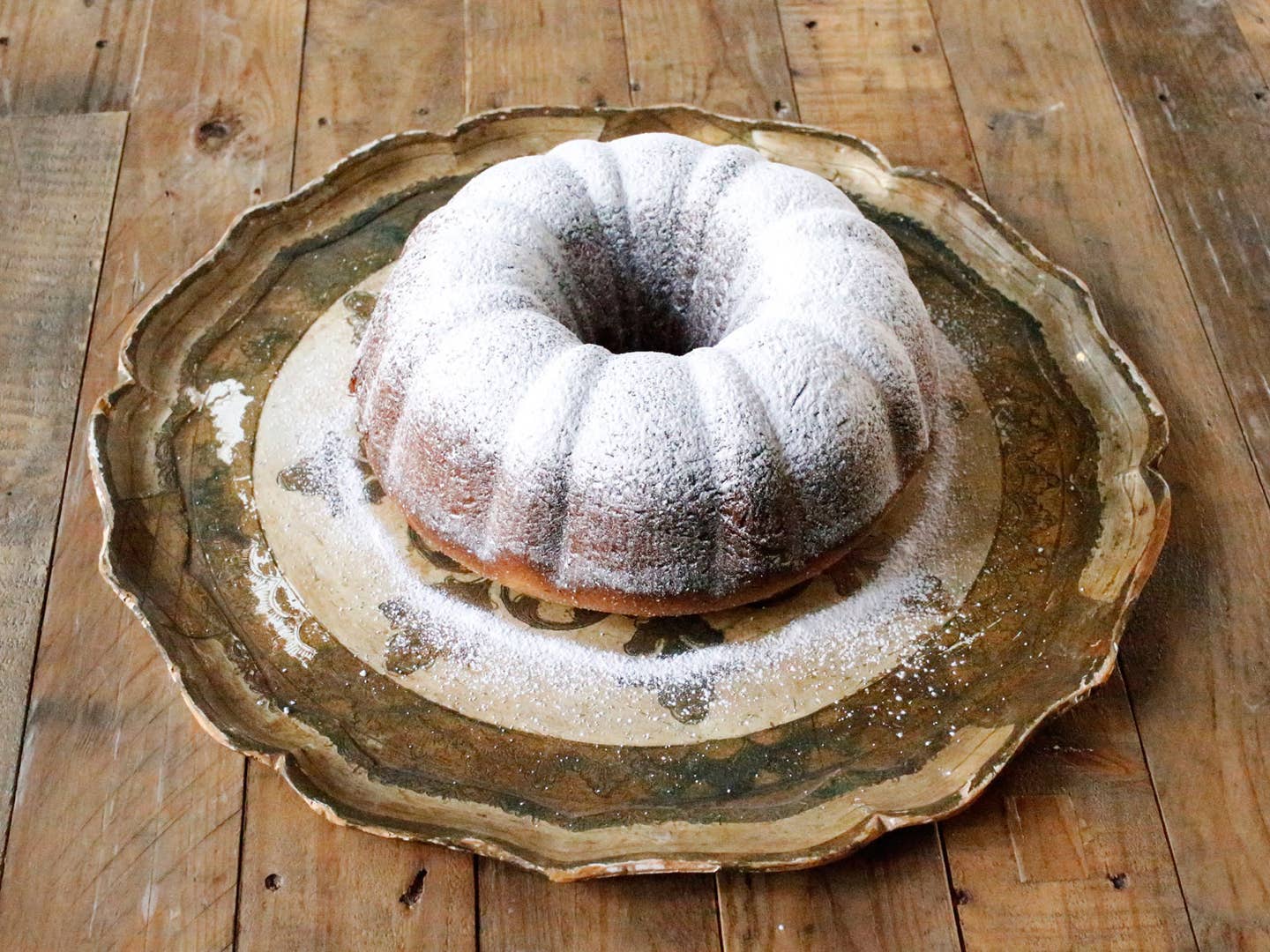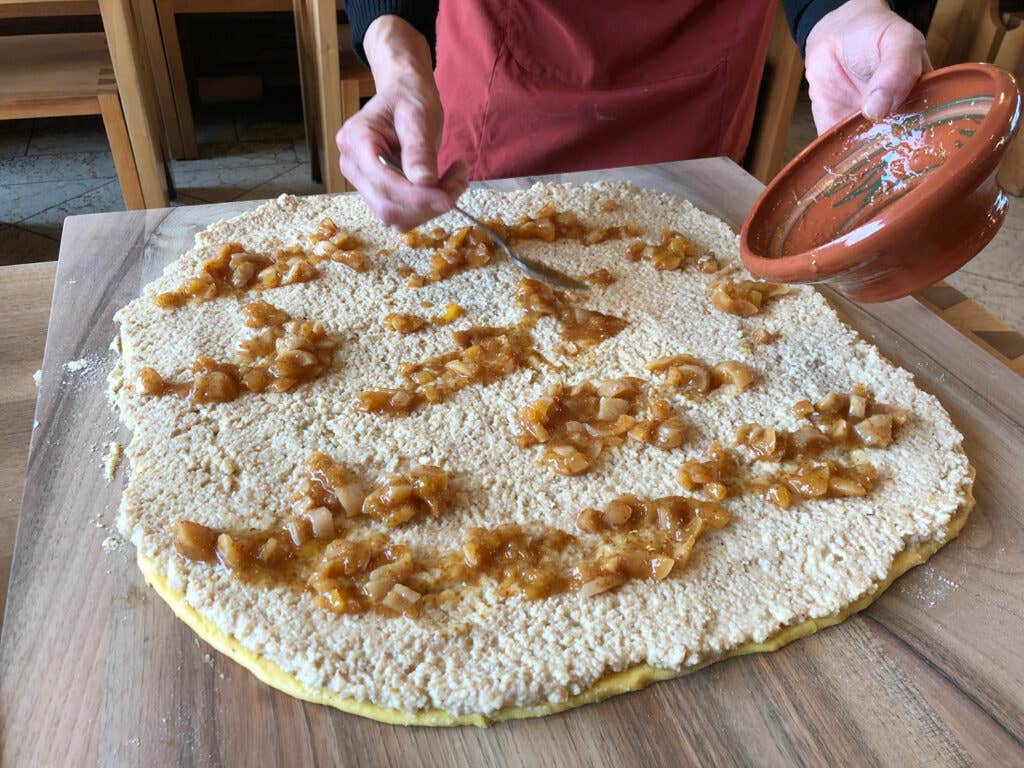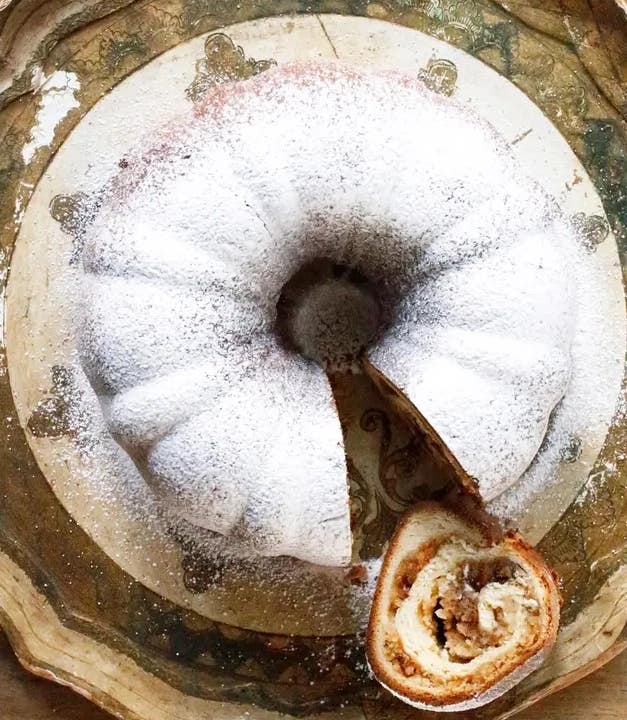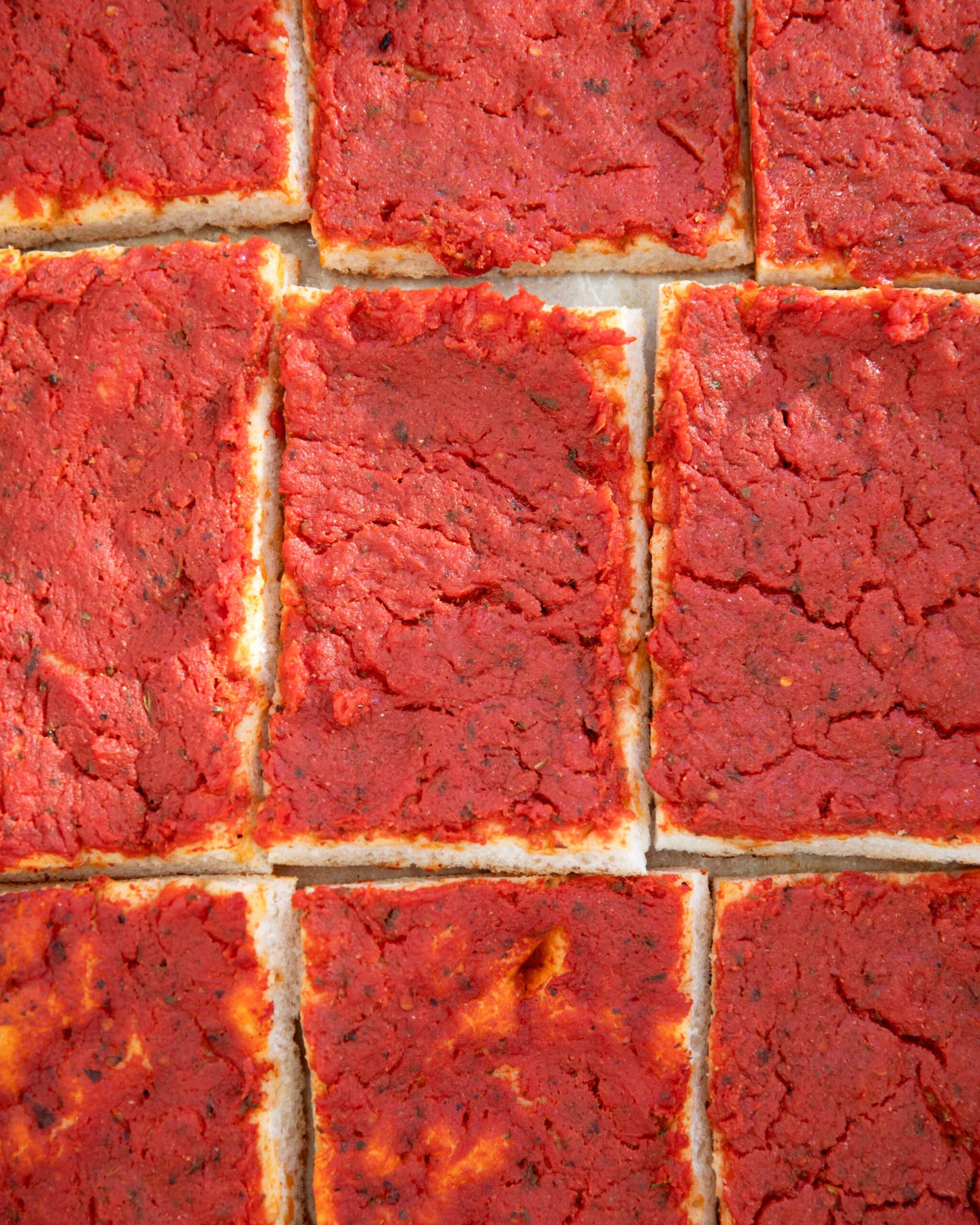
Potica: How They Make It On Slovenia’s Bled Island
This traditional Easter treat, filled with fig, hazelnut, and lemon, is a popular regional specialty on Slovenia’s Bled Island.
When Pope Francis met Melania Trump in 2017, he had a burning question for her—and it wasn’t about religion or world affairs. “What do you give him to eat? Potica?” he asked, gesturing toward President Trump’s impressive paunch. Potica (poh-TEE-tsa), of course, is the butter-rich cake native to the First Lady’s home country, Slovenia (then Yugoslavia). “Potica, yes!” she replied with a knowing chuckle, the rest of the room left scratching their heads as the two savored the obscure inside joke. Well played, Your Holiness, well played.
You may not know what potica is—don’t sweat it, neither did the pope’s translator—but every Slovenian does. This spiral-centered yeasted cake is the country’s most quintessential dish, and it’s been made there for centuries. Its brioche-like dough, enriched with sugar and eggs, remains a constant, while fillings vary widely, from sugared tarragon and crème fraîche (an Easter classic) to ground walnuts and rum-spiked cream (the crown jewel of most Christmas feasts).

Sometimes potica is the feast, particularly during the autumn pig slaughter (koline), when villagers have more pork on hand than they know what to do with. Fresh sausages and pork cracklings—often zhuzhed up with cheese, eggs, and herbs—get rolled into the dough, resulting in a savory, stromboli-like delicacy with such a tender crumb that it calves like a glacier when you take a bite.
Ask a Slovenian where to find the best potica, and the answer will likely be, “my grandma’s house.” But for the babica-less among us, Potičnica—a bakery on Bled Island, situated in a stunning tarn at the foot of the Julian Alps—offers the next-best thing. Maybe that’s because Romana Bohinc, the head baker, learned to make potica at her own grandmother’s side.
“Like her, I don’t measure anything,” Bohinc says with a shrug. “You just know when the dough feels right.” At least she does. With the rest of us in mind, the baker dusted off her measuring spoons and started scribbling.
Which filling to share with the world, of the approximately 50 she has on rotation at Potičnica? A fragrant mélange of figs and hazelnuts, both of which grow wild on Bled Island, plus a touch of local honey and a long, slow glug of heavy cream.
Before attempting the recipe at home, be forewarned: Potica is a cooking project, not everyday fare. You’ll want to be well-rested and plan-free before embarking on all the kneading, whisking, flouring, and rolling. Timing, Bohinc insists, is everything. “I like to pull the potica out of the oven just before my guests arrive,” she says. “When they walk through the door, they feel like they’re coming home for the holidays.”
If Knead Be...
Got the basics down pat? Try your hand at these alternative fillings that take the same dough and baking time.
Sweet tarragon: Separate 3 eggs and beat the whites to stiff peaks. In a medium bowl, whisk together 10 Tbsp. melted and cooled unsalted butter, ¾ cup sugar, the 3 yolks, ½ cup finely chopped fresh tarragon, and ½ cup sour cream or crème fraîche. Gently fold in the whites with a rubber spatula until a few streaks remain.
Walnut: Beat 3 egg whites to stiff peaks. Finely chop 560 grams (5 cups) walnuts and place in a medium bowl. Add 1¼ cups sugar and stir to combine. Bring 1¼ cups heavy cream and 2 Tbsp. dark rum to a simmer, and pour over the nut mixture. Stir until the sugar is dissolved. Gently fold in the whites with a rubber spatula until a few streaks remain. Cool to room temperature before proceeding.
Recipe

Keep Reading
Continue to Next Story










